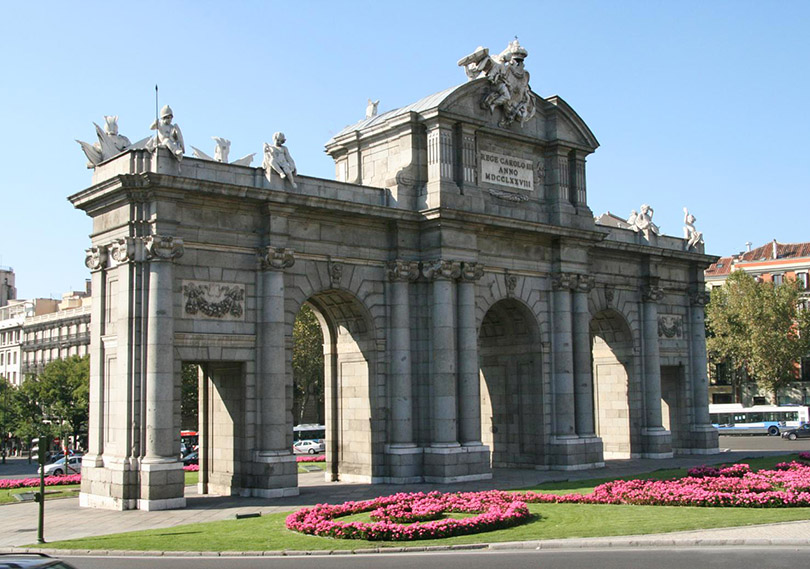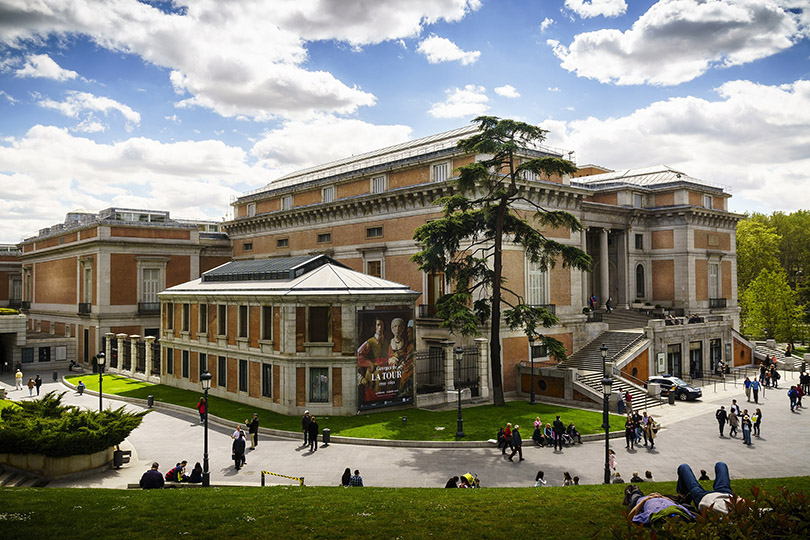
Puerto de Alcala built in 1778, Madrid; (c) Soul Of America/Mazell Purnell
Madrid History
Madrid History by man begins with the Arab town (“medina”) that grew around the alcazar (castle or fort) on a promontory overlooking the Manzanares River. The name Majerit first appears in AD 932, when the Christian king Ramiro II of León razed the town’s walls. The city’s population was initially Iberian and later Roman.
It is now commonly believed that the original name of the settlement here was Matrice, a pre-Muslim word, which refers to the waters of the area and particularly to the stream running down the Calle de Segovia.
By the late 10th century, there was a fort where the Royal Palace stands today. The fort was occupied by the Moors for centuries. The old Arab Walls surrounding that settlement can be seen today.
Between several different warriors, the Moors kept rule until Madrid was finally conquered in 1085 by Alfonso VI in his advance toward Toledo. This king ordered the main mosque within the fort’s walls to be “purified” and consecrated as a Catholic church under the guidance of the Virgin of the Almudena, the name deriving from a religious icon found near the “almudín” or wheat deposit. La Virgen de la Almudena later became Madrid’s female patron saint, whose saint’s day is celebrated on 9th November and who gives her name to Madrid’s cathedral.
In the year 1329, King Fernando V assembled The Court of Madrid for the first time.
A little later, Moors and Jews formed a concentrated population in the area that still today carries the name of Morería, but in 1494 the “unbelievers” were expelled and the mosque and other indicative buildings disappeared.
Later, Madrid was taken by Enrique of Tastamara and ceded by Juan I to King Leon V of Armenia who was then dethroned by the Sultan of Babilonia. Having been destroyed by fire during the reign of Enrique II, the city was rebuilt by his grandson Enrique III. He reincorporated Madrid under the Crown of Castille and founded El Prado, which is today a grand museum.
Enrique VI gave Madrid celebrated here his magnificent wedding with Doña Juana of Portugal. The death of the king caused the formation of two distinct bands within the Castille kingdom – the two sides disputing the succession of the throne. Isabel and her supporters overcame Doña Juana’s followers and the victorious “Catholic Kings” (Isabel and her husband Fernando) solemnly entered the city to reside in a mansion in the Plaza de la Paja owned by Don Pedro Lasso de la Vega.

Musee du Prado was once a king’s castle
Felipe II moved the Imperial Court to Madrid in 1561, although without making any official declaration. From this time Madrid was now the kingdom’s capital, apart from the brief years between 1601 and 1606 when Felipe III installed his court in Valladolid, another city in Spain.
Madrid enjoyed significant changes in the 1700s when city gates, bridges, and new buildings altered much of its appearance. The Royal Palace was constructed on the site of the ruins of the Alcazar or old Moorish Castle which had been destroyed by fire in 1734.
After 1738 Juan B. Sachetti directed the construction work on the Palace was completed by 1760. During this period the city continued to grow eastward to the present Plaza de la Independencia, which is the site of a monumental arch, the Puerta de Alcalá, built in 1778 and still a landmark.
